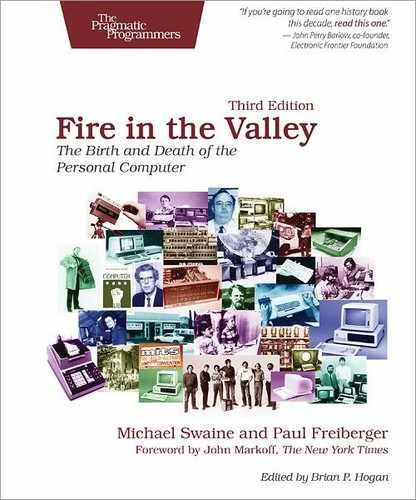Homebrew Legacy
That’s where the source of this industry has been. It hasn’t come out of TI, IBM, or Fairchild. It’s come from people who are on the edge, who have an alternative vision.
–Fred Moore, founder of the Homebrew Computer Club
In 1979, Proc Tech was in deep trouble. Marsh and Ingram, caught off balance by the Commodore and National Semiconductor threats and worried about competition from the promising Apple Computer, had become uncertain about where to go with their product line. Their worries clearly showed. Felsenstein made frequent visits to their offices to talk about new products, but Marsh and Ingram seemed unable to decide on any. At last Felsenstein asked, “Look, what the hell do you guys want?” They replied that they wanted to see what Felsenstein could come up with. He finally understood that they really had no product planning.
Proc Tech also lacked the flexibility that more money would have provided the company, but Marsh and Ingram (being the green executives that they were) suffered, like Bill Millard, from “entrepreneur’s disease.” Adam Osborne had talked with them about accepting investments, but by now the investors were the ones who were reluctant to talk. Proc Tech was not developing any new products, and the Sol was an aging 8080 machine in a bold new world of computers built around the Z80.
Was the Sol out of date? Not really. But because technology was developing rapidly and Proc Tech had nothing new in the works, it was hard to see a future for the company. When potential investors asked Felsenstein how much work the Sol needed to keep it technologically advanced, he told the truth: quite a bit. That didn’t help.
On May 14, 1979, the wolf came to the Pleasanton factory door and found nobody home. The Proc Tech principals had cashed in their chips and gone on to other ventures.
Theories abounded as to why Processor Technology failed: too many revisions of the basic product, too much reliance on one product, failure to develop new products, and failure to keep abreast of new technology. Steve Dompier held that the company looked inward too much and tried to deal with all its problems as though they were simply organizational ones. Proc Tech did shuffle people around, however. According to one story, the company had hired a full-time employee merely to relocate phones in the Pleasanton plant.
Felsenstein has always contended that Proc Tech’s boat sank because it was full of small holes and management tended to puncture even more holes in the vessel. Or maybe it was Gary Ingram’s desk.
When Proc Tech held its bankruptcy auction, Parasitic Engineering founder Howard Fulmer drove to Pleasanton to check out the defunct enterprise. He walked through the building and passed small, slapped-together cubicles, a sign of a company on the skids. On the top floor of the building, Fulmer found what could only be called the penthouse suite. He’d never been there before and was impressed. There, in the middle of a huge room with large windows, stood Gary Ingram’s fine French Provincial desk. Fulmer glanced over his shoulder to check that he was alone in the room, then went over to the desk and sat down behind it. Nice chair, he thought. He settled back, put his feet up on the beautiful desk, looked out across the valley, and sighed contentedly. “I feel rich,” he murmured. “Everything must be fine.”
Despite its ultimate failure as a company, Proc Tech and companies like it—ones that operated in ways that baffled seasoned executives—were constructing the microcomputer industry. Soon that industry was shifting its orientation from the hobbyist to the consumer. Market niches were being established. By 1979, Cromemco was known for its square steel boxes full of solidly engineered boards that were sold primarily to engineers and scientists. Vector Graphic was selling business machines that started with the turn of a key and immediately ran a business application program. Apple’s computer, in its plastic case, was the premier game machine. And encroaching on the territory of the minicomputers was Alpha Microsystems, offering microcomputer systems that could support several users simultaneously.
Over the years to come, the Homebrew legacy continued to influence product designs and marketing principles. Homebrew was both a catalyst in the creation of the microcomputer and an active entity that fed its continued development. But because computers were becoming affordable to large numbers of people, another kind of creative effort was needed to make the hardware useful to the average person. Computer power to the people, the dream of computer revolutionaries like Felsenstein, required software. User-friendly, powerful, and affordable programs and the means for producing them were essential to turn the microcomputer into the personal computer.
The newborn microcomputer industry now needed a software industry. But already differences of opinion were emerging that would shape that industry—such as the question of whether the code should be shared or proprietary.
